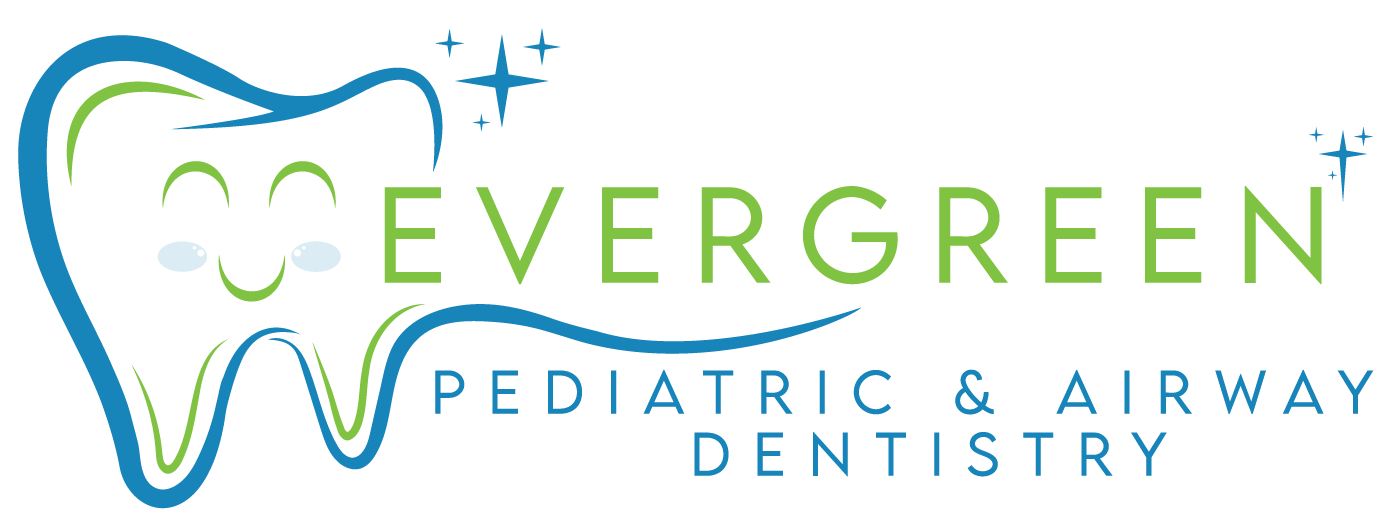Unmasking the Truth: Understanding Sleep Disordered Breathing
Sleep disordered breathing is a serious health issue that affects millions of children, yet often goes undiagnosed due to a lack of understanding and awareness. Many parents are not familiar with the warning signs or symptoms, which can make catching this condition difficult to do. The reality is that snoring isn’t just an annoyance; it could be the symptom of an underlying sleep-related disorder such as obstructive sleep apnea (OSA). In order to help parents better understand the risks associated with OSA in their children, we’ll discuss what it is, its risks, and how you can tell if your child may have OSA. With this knowledge at hand, you’ll be equipped with the tools needed to go forth masking the truth about sleep disordered breathing in kids.
What is Sleep Disordered Breathing (SDB) and How Common is it Among Children
Sleep Disordered Breathing (SDB) is a general term encompassing various breathing difficulties that occur during sleep. These difficulties can range from frequent loud snoring to a more severe condition called Obstructive Sleep Apnea (OSA). OSA involves repeated episodes of partial or complete blockage of the airway during sleep, leading to disrupted breathing patterns.
When a child experiences disruptions in breathing during sleep, it triggers a choking response in the body. As a result, the heart rate slows down, blood pressure rises, the brain becomes alert, and sleep is interrupted. This cycle can have significant effects on a child’s overall well-being and daily functioning.
In terms of prevalence among children, estimates suggest that approximately 1 to 4% of children suffer from OSA, according to the American Sleep Apnea Association. However, due to the subtle nature of SDB symptoms, they are often mistaken for “normal” childhood behavior, leading to a potential underestimation of the actual number of affected children. It is important to note that SDB can affect children of all ages, from newborns to adolescents, with the highest occurrence observed between the ages of 2 and 6.
Risks and Potential Complications of Sleep Disordered Breathing in Children
Sleep disordered breathing can have severe implications on a child’s health and development if not diagnosed and treated promptly. Physically, SDB can lead to growth issues, as the disruption of the sleep cycle can affect the release of growth hormones. Children with SDB may also experience bedwetting issues, as the condition can interfere with the body’s hormonal control of urine production.
Moreover, SDB can pose significant risks to a child’s cognitive and behavioral development. Children experiencing repeated sleep interruptions may suffer from excessive daytime sleepiness, which can lead to difficulties in concentrating, learning difficulties, and poor academic performance. They may also exhibit behavioral problems such as hyperactivity, aggressiveness, and irritability, often mistaken for attention deficit hyperactivity disorder (ADHD).
Long-term, untreated SDB can contribute to serious health conditions. These include cardiovascular problems, like high blood pressure and heart disease, and metabolic disorders, such as obesity and diabetes. Given these potential complications, it’s crucial that parents and healthcare providers recognize and address the symptoms of SDB in children promptly.

Sleep Disordered Breathing in Kids
Symptoms of Sleep Disordered Breathing in Kids
The symptoms of Sleep Disordered Breathing (SDB) in children can often be difficult to recognize as they can mimic other common childhood behaviors or ailments. Some of the most common symptoms include:
- Frequent loud snoring: This is often the most observable symptom of SDB. Remember, not all children who snore have SDB, but almost all children with SDB will snore.
- Pauses in breathing during sleep: These can sometimes be followed by gasping or choking sounds.
- Restless sleep: Children with SDB may toss and turn throughout the night due to discomfort or difficulty breathing.
- Night sweats: Excess sweating during sleep can be an indication of increased effort to breathe.
- Morning headaches: These can be a consequence of low oxygen levels during sleep.
- Daytime sleepiness: Despite seemingly getting a full night’s sleep, children with SDB may often seem drowsy during the day.
- Behavioral issues: These can include hyperactivity, aggressiveness, and difficulty concentrating, which can often be mistaken for ADHD.
It’s important to note that symptoms can vary from child to child. If your child consistently displays one or more of these symptoms, it’s recommended to consult a healthcare professional for further evaluation.
How to Talk to Your Child’s Doctor about Sleep Disordered Breathing
If you suspect your child might be suffering from Sleep Disordered Breathing, it’s crucial to communicate your concerns effectively to your child’s healthcare provider. Here are some steps you can follow:
- Document and Share Symptoms: Make a list of the symptoms you’ve observed, including their frequency and severity. This can include snoring, pauses in breathing during sleep, restless sleep, night sweats, morning headaches, daytime sleepiness, and any behavioral issues like hyperactivity or trouble focusing. The more detailed your notes, the better equipped your doctor will be to understand the situation.
- Discuss Your Child’s Sleep Habits: Talk about your child’s bedtime routine, sleep schedule, and sleep environment. Note any changes you may have noticed recently.
- Provide a Complete Medical History: Share your child’s medical history, including any known allergies, previous illnesses, and any medications or supplements they’re currently taking. It’s also useful to share information about your family’s medical history, particularly if there are cases of sleep disorders or other respiratory conditions.
- Ask the Right Questions: Have a list of questions ready to ask your doctor. These might include: What could be causing these symptoms? Are there any tests needed to confirm a diagnosis? What treatment options are available, and what are the potential side effects?
- Express your Concerns: Speak openly about your worries and concerns. Your child’s doctor can provide reassurance and guide you towards the appropriate next steps.
Remember, your child’s doctor is there to help. Open communication is key in ensuring your child gets the care they need.
Tips for Diagnosing and Treating Sleep Disordered Breathing in Kids
When diagnosing Sleep Disordered Breathing in children, healthcare providers may use a combination of methods. It’s crucial to approach this with a comprehensive understanding of the child’s symptoms, medical history, and lifestyle habits. Here are some tips:
- Overnight Sleep Study: Also known as a polysomnogram, this is the most accurate method for diagnosing SDB. It monitors the child’s brain waves, blood oxygen levels, heart rate, breathing, and eye and leg movements during sleep.
- Physical Examination: The doctor may check the child’s throat, nasal passages, and neck to look for any physical factors that might be contributing to SDB, such as enlarged tonsils or adenoids.
- Medical History: As mentioned earlier, providing a thorough medical history can be invaluable in the diagnosis process.
Once diagnosed, there are several treatment options available for SDB in children. These may include:
- Lifestyle Changes: Improving sleep hygiene, maintaining a healthy weight, and avoiding exposure to allergens and irritants (like tobacco smoke) can sometimes alleviate symptoms of SDB.
- Continuous Positive Airway Pressure (CPAP): This is a common treatment for SDB where a machine uses mild air pressure to keep the airways open.
- Oral Appliances: These devices are designed to keep the throat open and may be used in some cases.
- Surgery: In cases where SDB is caused by physical obstructions like enlarged tonsils or adenoids, surgery might be recommended.
- Medication: Certain medications can be used to treat SDB if it’s caused by an underlying condition like allergies.
Remember, it’s important to discuss all options with your child’s healthcare provider to determine the best course of treatment for your child’s specific needs.
Benefits of Early Intervention
Early intervention for Sleep Disordered Breathing (SDB) in children offers numerous benefits, providing a comprehensive approach to mitigate the potential adverse effects on a child’s growth, development, and overall quality of life. Firstly, by addressing SDB at an early stage, it can alleviate the immediate symptoms such as excessive daytime sleepiness, behavioral issues, and loss of cognitive function, thereby enhancing the child’s overall wellbeing and allowing them to thrive in their daily activities. Secondly, early intervention may effectively prevent the development of serious long-term health issues that can arise from untreated SDB, including hypertension, heart disease, and metabolic disorders. By identifying and treating sleep-related breathing problems early on, children have a greater chance of avoiding these potentially life-altering conditions in the future.
Furthermore, early diagnosis and treatment of SDB can have a positive impact on a child’s academic performance, social interactions, and emotional development. When children receive the necessary interventions to improve their sleep quality, they are more likely to experience better concentration, memory retention, and cognitive abilities, leading to improved academic outcomes. Additionally, better sleep can enhance a child’s mood stability and emotional well-being, enabling them to develop healthier relationships and social skills.
Lastly, early intervention in managing SDB provides a sense of relief not only for the affected child but also for the entire family. Parents and caregivers can have peace of mind knowing that their child’s health is being appropriately managed, reducing their worry and stress. Through early intervention, families can establish a consistent sleep routine and implement effective strategies to promote better sleep hygiene, ultimately leading to improved sleep and overall health for the child.
In summary, early intervention for Sleep Disordered Breathing in children offers a multi-faceted approach that addresses immediate symptoms, prevents long-term health complications, enhances academic and social well-being, and provides peace of mind for the entire family. By recognizing the importance of early detection and treatment, we can pave the way for better sleep and a brighter future for children affected by SDB.
 How to Help Your Child Manage Sleep Disordered Breathing
How to Help Your Child Manage Sleep Disordered Breathing
Managing Sleep Disordered Breathing (SDB) in children is a collaborative effort involving healthcare providers, parents, and the child. Here are some strategies parents can employ to help their child manage SDB:
- Maintain a Consistent Sleep Routine: Establishing a regular sleep routine, which includes a consistent bedtime and wake-up time, can help regulate your child’s sleep pattern. This also means keeping this routine on weekends and holidays to maintain the body’s internal clock.
- Create a Restful Sleep Environment: A quiet, dark, and cool environment can help promote better sleep. Consider using blackout curtains, eye shades, ear plugs, humidifiers, fans, or white noise machines.
- Promote Healthy Eating Habits: A balanced diet can contribute to better sleep. Limit caffeine intake, especially in the evening, and avoid large meals close to bedtime.
- Encourage Regular Exercise: Regular physical activity can help regulate sleep patterns and improve SDB. However, avoid intensive exercise close to bedtime as it may interfere with sleep.
- Limit Screen Time Before Bedtime: The light emitted from screens can interfere with the body’s sleep-wake cycle. Try to turn off electronic devices at least an hour before bedtime.
- Practice Good Sleep Hygiene: This includes habits like using the bed only for sleep (not for activities like reading or watching TV), keeping the sleep area clean and comfortable, and having a relaxing pre-sleep routine.
- Follow Through with Treatment Plans: This could involve medication, use of a breathing device, or lifestyle changes. Ensure that your child follows the healthcare provider’s instructions closely.
- Stay Positive and Supportive: Encourage your child and reassure them that they’re not alone. Encouragement can go a long way in helping your child comply with treatment and manage SDB symptoms effectively.
Remember, managing SDB is a journey. Every child’s experience will be different, and what works for one may not work for another. Be patient, be persistent, and keep the lines of communication open with your healthcare providers.
In conclusion, managing Sleep Disordered Breathing in children requires early intervention, a comprehensive approach, and a collaborative effort from all parties involved. By educating ourselves on SDB and implementing strategies to promote better sleep, we can help our children thrive and achieve their full potential. So let us work together to improve the quality of life for children affected by SDB. The future is brighter when we prioritize and invest in their sleep health. So let us continue to advocate, raise awareness, and support research for better interventions and treatments for SDB in children. Together, we can make a difference.
Evergreen Pediatric Dentistry
https://www.google.com/maps?cid=14720788683151219551
12910 Totem Lake Blvd NE #103, Kirkland, WA 98034, United States
(425) 814-3196
https://evergreenkidsdentist.com/


